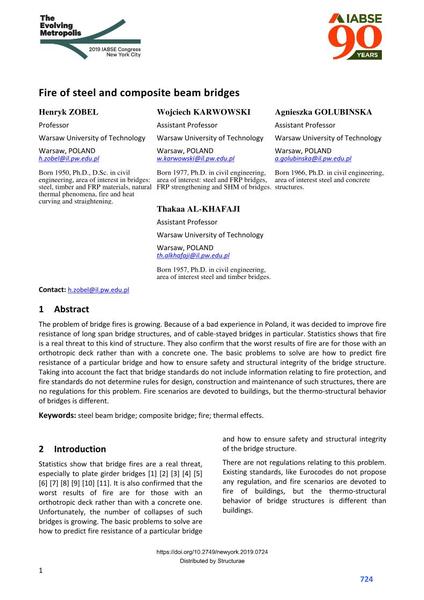Fire of steel and composite beam bridges

|
|
|||||||||||
Bibliografische Angaben
| Autor(en): |
Henryk Zobel
(Warsaw University of Technology)
Wojciech Karwowski (Warsaw University of Technology) Agnieszka Golubińska (Warsaw University of Technology) Thakaa Al-Khafaji (Warsaw University of Technology) |
||||
|---|---|---|---|---|---|
| Medium: | Tagungsbeitrag | ||||
| Sprache(n): | Englisch | ||||
| Tagung: | IABSE Congress: The Evolving Metropolis, New York, NY, USA, 4-6 September 2019 | ||||
| Veröffentlicht in: | The Evolving Metropolis | ||||
|
|||||
| Seite(n): | 724-731 | ||||
| Anzahl der Seiten (im PDF): | 8 | ||||
| DOI: | 10.2749/newyork.2019.0724 | ||||
| Abstrakt: |
The problem of bridge fires is growing. Because of a bad experience in Poland, it was decided to improve fire resistance of long span bridge structures, and of cable-stayed bridges in particular. Statistics shows that fire is a real threat to this kind of structure. They also confirm that the worst results of fire are for those with an orthotropic deck rather than with a concrete one. The basic problems to solve are how to predict fire resistance of a particular bridge and how to ensure safety and structural integrity of the bridge structure. Taking into account the fact that bridge standards do not include information relating to fire protection, and fire standards do not determine rules for design, construction and maintenance of such structures, there are no regulations for this problem. Fire scenarios are devoted to buildings, but the thermo-structural behavior of bridges is different. |
||||
| Stichwörter: |
Verbundbrücke Brand
|
||||
